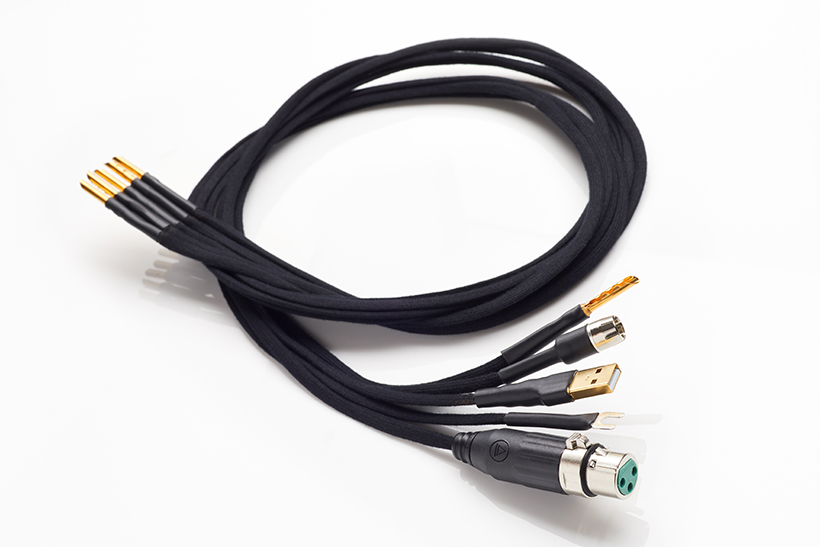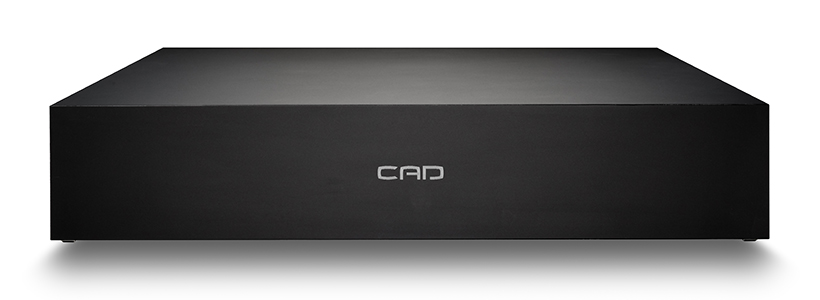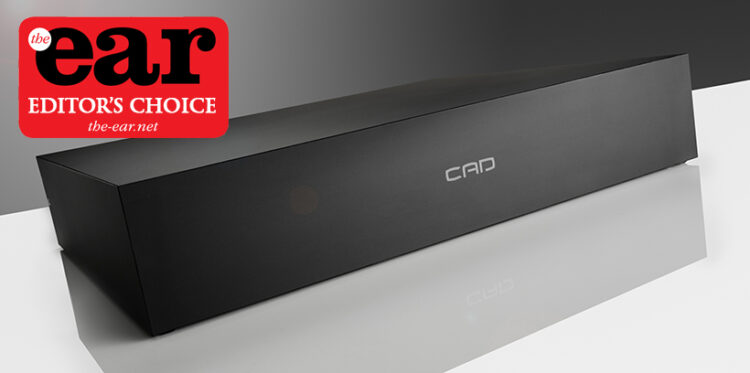The CAD GC or Ground Control devices were created specifically to combat the noise floating around on the AC power supply in your home that is created by switched mode power supplies, computers, wi-fi, routers etc. This noise is at high frequencies beyond the audible but it creates the noise floor of an audio system, which determines the quietest sounds you can hear. If the noise floor is high then a lot of fine detail disappears or is masked by it, you don’t perceive this because ignorance is to some extent bliss, but you are also missing out on a lot of the subtleties and nuances in the music because they are hidden within the noise and this becomes obvious when that noise floor is reduced.
Ground Control designer Scott Berry explains that there are two independent voltage references within an audio system: signal ground and earth. Earth is the third pin on a 13A mains plug and ultimately connects to the earth itself, signal ground is the negative size of an audio connector such as an RCA, XLR or USB plug. The CAD approach is to soak up the high frequency noise on both these references by connecting them to materials that convert this energy into heat. Which sounds a bit bizarre I have to admit but having used a GC-1 for many years I can confidently say that it does remarkable things for sound quality in all manner of systems and places.
When you have a GC-1 with two connections the best thing to do is to connect it to the earth on your mains supply, you can do this with a 13A plug or better still with an earth point on the power distributor. The GC-3 has six connections which means you can hook up pretty well every part of a system as well as the mains earth, the only element that Scott doesn’t recommend you connect a GC to is a power amp, and with integrated amps he recommends only connecting to an input.

The GC-3 is an substantial unit finished in matte black acrylic, it looks the part but has inconveniently small feet which makes lifting a bit tricky (unless you have steel finger nails) but hopefully you won’t have to do this too often. It’s also pretty big, requiring as much space as your average full size component and with six cables connected to the back it creates something of a web behind the system. CAD’s Ground Control interconnects are almost as extreme as the devices themselves and have evolved through several iterations and now have a cotton jacket over what feels like a single solid strand that means the cable bends rather than hangs like most audio cables. You can get these with most common audio connectors including 4mm banana, RCA and USB with the one that provides the greatest surface area being preferable if you have a choice, so an RCA is better than a spade for instance. With equipment that has no obvious connection point you can loosen a chassis bolt and clamp a spade connector beneath it, I did this with my turntable power supply with no difficulty.
You could use almost any piece of wire to connect the GC to a component but CAD has researched this link for a number of years and Scott is nothing if not obsessive about maximising results regardless of cost or practicality. So while the GC cables look expensive for what they are, like other audio cables it’s not easy to substitute if you want to get the results that this system is capable of.

Sound quality
The first components I tried the GC-3 with were a Grandinote Volta streamer, an Innuos Zenith SE music server and an earth point on my mains distribution board. With a Schubert piano piece a lot more of the reverb from the recording came through and the note transients were a lot clearer, they stopped and started much more quickly which created a stronger sense of immediacy. With a jazz track separation improved as did the sense of speed; as a result timing became more precise. Breaking things down I started with only one connection to the server with a USB plug, this made things calmer, more open and brought in greater immediacy. Adding the mains connection (4mm banana) on top of this opened up the soundstage, made backgrounds quieter and added power to the sense of timing, making bass lines more taut. Adding the streamer with another USB cable did the stop/start thing and increased perceived dynamic range which suggests that the noise floor had dropped. This cleaned up ‘Requiem for John Fahey’ (Gwenifer Raymond) a treat and made the guitar more solid and real in the room, it also meant I could play at a more realistic volume without discomfort, suggesting a drop in distortion.
With vinyl where the Rega RP10 turntable power supply was connected with a spade to the chassis and the Tom Evans Groove SRX phono stage connected with a 4mm banana the sound became calmer because high notes were cleaner and less frizzy, backing vocals became clearer and there was a lot more space around notes so following individual voices and instruments got a lot easier. Timing improved to the extent that my foot started moving of its own accord in the classic ‘follow the tune’ way. I also really enjoyed the increased radiance of the sound that resulted from the phono stage connection, the music becoming considerably more vibrant and clear. I hadn’t perceived it as being mushy before but that was certainly the impression that allowing the GC to remove the noise gave, less mush means more music, no doubt about it.
This is probably why there was a GC-1 tucked away on a shelf beneath the Air Force Zero turntable that was unveiled at the High End show in Munich earlier this year. This is a $450,000 turntable that weighs as much as a car yet its makers consider that it benefits from ground cleaning. There is no easy way to attach a spade to my Rega RP10 but I am inclined to find one.

With a Rega Saturn-R CD player connected using an RCA the sense of three dimensionality of the sound improved markedly, allowing instruments to literally pop into the room with more tonal depth and precision of timing. Image depth and physicality of sound were clearly enhanced and this provided a richer musical experience that made this format a lot more appealing. The only component that I found which didn’t really benefit was a Naim NDX 2 where it seemed as if the sound had been slugged, regardless of which position the Naim’s ground switch was in. But that’s the clue, Naim appear to be unique in taking ground planes seriously enough to offer a floating/grounded switch option on their sources, perhaps this is a key to their success. But every other component I tried benefitted to a remarkable degree, the iFi Pro iDSD DAC for instance delivered more reverb with cleaner treble and warmer midrange, timing once again got better thanks to the removal of blurring that low level noise brings to the sound.
There is no doubt whatsoever that cleaner ground and earth allows any system to reveal more of the music, and I mean a lot more. The sheer vitality and contrast it brings to all forms of music is inspiring, Herbie Hancock’s fabulous ‘Chameleon’ for instance is given a new lease of life thanks to the refreshing effect of the GC-3. Anyone with a decent system should investigate the CAD Ground Control products and anyone who can afford it should try the GC-3, it’s a revelation.


